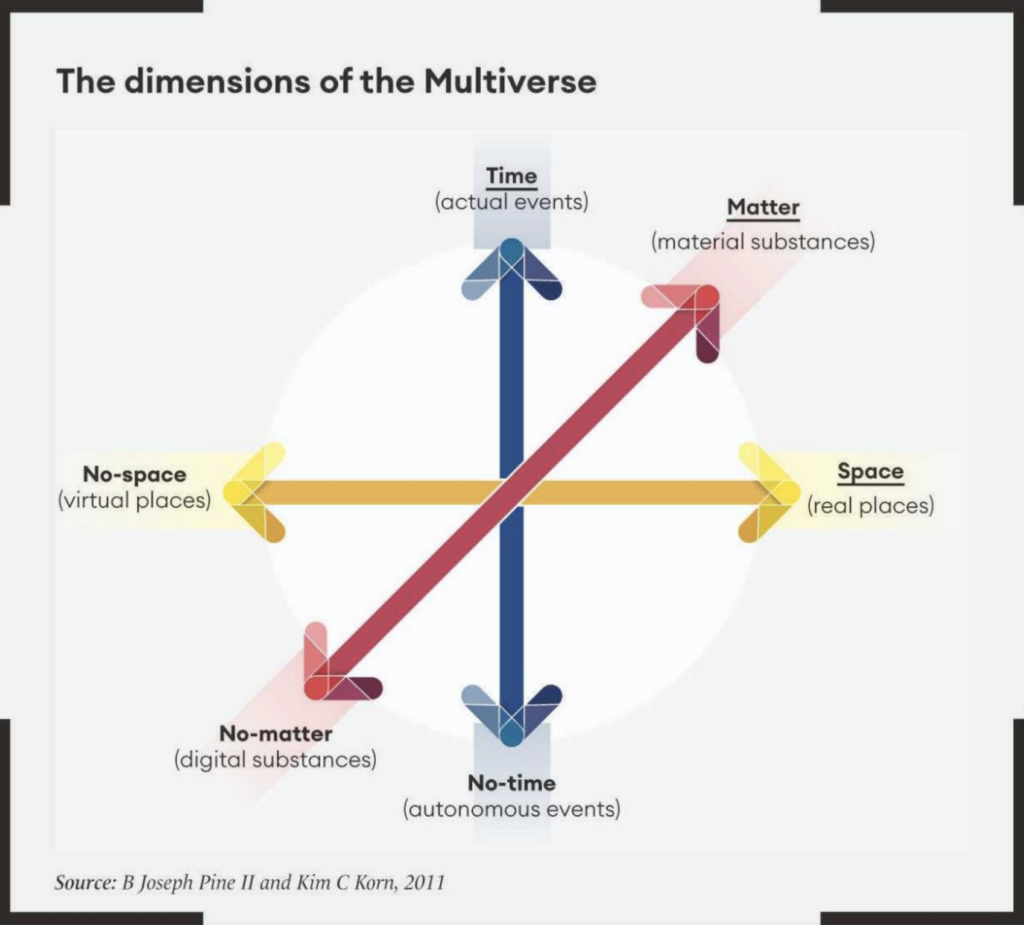Markets are a fiction that can obscure consumers’ real needs. Businesses need to engage with their customers’ inherent uniqueness
I can still remember the first time a client asked me to work with them on its strategy of becoming customer centric. Ever since I began working on my first book, Mass Customization: The New Frontier in Business Competition, I focused on the tremendous value companies could create by offering exactly what individual customers wanted but with low-cost, high-volume, efficient operations. But I had never used the term ‘customer-centric’. So I did what I always do in understanding new ideas: get out the dictionary. In looking up ‘customer’ in the Oxford English Dictionary I found this straightforward definition: “One who frequents any place of sale for the sake of purchasing; one who customarily purchases from a particular tradesman; a buyer, purchaser.” ‘Centricity’ was defined even more plainly: “Centric quality or position; relation to a centre.”
Customer centricity therefore simply means, ‘The one who pays you money placed at the centre of everything you do.’ There is a word in that definition that must be emphasized: the word ‘one’.
Markets, as commonly conceived of in business, simply do not exist. They are a convenient fiction companies employ when they do not want to treat customers as the unique individuals they truly are. A customer is not a market, or a segment, or a niche, or a generation, or a persona, or any other agglomeration of anonymous buying units of indeterminate size. A customer is a living, breathing individual person – or, if you are a B2B company, an active, corporeal individual enterprise. You must therefore ascend to the proposition that all customers are unique; undeniably, unremittingly, unalterably unique.
Self-commoditizing vs customizing
In fact, thinking about, understanding, and interacting on the basis of markets instead of customers commoditizes yourself. In the very first chapter of The Experience Economy: Competing for Customer Time, Attention, and Money, Jim Gilmore and I talk about this dynamic, where customers treat your offerings as if they were undifferentiated commodities to be bought and sold solely on price, price, price. Later, we explain how customization is the antidote to commoditization: when you customize for individual customers you cannot help but be differentiated.
Customization turns tangible goods into services: intangible activities performed on behalf of individual customers. When you work with customers to understand their needs, design offerings tailored to those needs, dynamically bring together exactly the right components to fulfil those needs, and then deliver that offering to each individual customer, you have shifted into the service business. Consider Coca-Cola’s Freestyle machine, where each customer defines what drink he desires on a touchscreen and watches as the Freestyle combines the components into one final, pleasing product poured into the cup.
Similarly, customizing turns services into experiences: memorable events that engage each customer in an inherently personal way. If you design exactly the right service that the customer wants at this moment in time, you cannot help but make them go “Wow!”, turning it into a memorable event. Think of Ritz-Carlton hotels, where every employee learns the preferences of every guest to fulfil them without the guest having to ask.
And finally, customizing turns experiences into transformations: effectual outcomes that guide individual customers in achieving their personal aspirations. Profile, the weight loss and nutrition programme, builds its offering not just on weight plans and meals, but on weekly one-on-one coaching experiences at which each member re-commits to the process.
Recognize that the nature of the customer changes with each genre of economic offering. With transformations, the customer is an aspirant who seeks internal change through time well invested. With experiences, the customer is a guest who wants to be engaged in places and events that offer time well-spent. With services, the customer is a client who expects particular activities to be executed that provide time well-saved. With goods, the customer is a user, who requires the use of specific items, generally not because they have value in and of themselves but because they enable desired activities, events, and change. (For more, click here to read our article, ‘Competing for Customer Time’, Dialogue, Q4 2021.)
Only in commodities is the customer actually a market. Commodities traders – in oil, gas, electricity, grains, and so on – never interact with individual customers, much less know who they are. They trade into true markets, simply selling at whatever price the market bears.
When you collect your customers together into a market and do not treat them as the individuals they are, you are commoditizing yourself. Why should customers care about you, enter into any sort of relationship with you, or treat you as anything but a commodity supplier when you treat them as a commodity buyer? Unless you actually extract and trade in commodities, every day you delay in embracing customer centricity is another day you spend self-commoditizing your business.
Digitizing business
Many companies embrace so-called ‘digital transformation’ as a way of lowering costs and enhancing relationships, but without a concomitant commitment to customer centricity such programmes often devolve into cost-cutting exercises that turn personal interactions into automated interfaces. This results in no service, poor service, or (at best) self-service, with little possibility for creating greater economic value through the engagement of experiences and guidance of transformations.
It’s easy to fall prey to such programmes, for digitization is the greatest force of commoditization ever invented. The ability to digitize offerings – or at least the promoting, selling and buying of those offerings – means customers can find everything they want on that frictionless marketplace of the Internet, instantly comparing specifications and prices, which tends to push the latter down to the lowest possible amount. That then becomes another route to being commoditized.
With a customer-centric focus, however, digitization becomes the greatest force ever invented for customization! For anything you can digitize you can customize. Once it enters the realm of zeros and ones, you can turn a zero into a one and vice versa – instantly, costlessly, seamlessly, frictionlessly. You can therefore efficiently serve customers uniquely, the very definition of mass customizing, by giving every customer exactly what he wants at a price he’s willing to pay. When you do not neglect the human beings that are your customers (and, for that matter, your workers) and the inherent uniqueness of each, you can deploy digital technology to its fullest and thereby mass customize to the utmost.
And there’s one more dynamic that digitization offers businesses: the ability to create new and wondrous experiences. This was the reason consumers embraced the Internet so quickly and so readily when it burst on the scene in the mid-1990s. Remember how it was so aptly described as “surfing”? Now digitization enables amazing experiences – often experiences simply not possible in reality – via such technologies as projection mapping, augmented reality, virtual reality, alternate reality, NFTs, and of course the oh-so-coming-if-not-quite-here metaverse.
Experiencing the possibility
Here’s how to think of the possibility such digital technologies bring to individual customers: not as a single metaverse, but as a practically infinite Multiverse.
As I first described in my book Infinite Possibility: Creating Customer Value on the Digital Frontier, with Kim C Korn, all our experiences happen in the reality of our universe, which is comprised of the trinity of time, space, and matter. All experiences happen in an event lasting a specific segment of time, in a particular place, using the atoms that fill that place.
But they are not all that exist. Primarily due to the advent of digital technology, we can also have experiences in no-time, no-space, and no-matter. Such experiences are autonomous to what transpires in reality, but happen in virtual places, using bits that create that digital environment.
This is what I call the Multiverse, with its three dimensions and six experience design variables. In them, you can position any and all possible experiences, whether within the reality of time, space, and matter, the virtuality of no-time, no-space, and no-matter, or – often most engagingly of all – somewhere in between.
Applying digitization in this way effectively fuses the real and the virtual in ways that create rich and robust, cohesive and compelling, individual and authentic, captivating and dramatic, even meaningful and transformative experiences across the expanse of the Multiverse.
Think of the Multiverse as giving people superpowers. We can fly like Superman, run like the Flash, have the strength of the Hulk, shapeshift like Odo, be telepathic like Professor X, and see past, present, and future like Dr Manhattan. Like Batman, we can get all the best gadgets. We can take a magic wand out of our pocket and summon a chariot to teleport us to anywhere in the city we want to go.
We can have bodily telepresence to anywhere. We can make emotional connections to anyone. We can expand our minds. We can even have spiritual epiphanies. We can enter the Matrix. We can spend midnight at the OASIS. We can build whatever we want in the metaverse and experience what others build for us. We can augment our sight with goggles, glasses, and eventually contacts, as well as augmenting the sensations of sound, touch, smell, and even taste. We can explore the real world through an alternate reality that gives everything new meaning. We can warp time.
We can replicate anything; we can beam anywhere; we can communicate with anyone. We can speed across the galaxies, immerse ourselves in other worlds, and even heal with newly created organs customized to our DNA. We can explore strange new dimensions, seek out new technologies and new experiences, and boldly go where no one has gone before.
All this and more becomes possible when businesses embrace the infinite possibility inherent within the Multiverse. The metaverse and all such experiences create virtual places out of digital substances in which time loses its relationship with the clock. But the most engaging experiences will be those that again fuse the real and the virtual. Think of how Uber, Fiverr, Grubhub, Bumble, Venmo, and all other such on-demand apps collapse time – time that then can be spent on the experiences we more highly value. Think of Pokémon Go, taking a video game out into the real world to wonderful effect.
Consider gamification, applying digital gaming techniques to yield transformative behaviour change in human beings. Recognize how 3D printing is the opposite of digitization; it materializes virtual ideas that we instantiate in material substances, enabling us to locally and quickly create repair components, for example, and customize basically anything we want that fits within the envelope of the printer. Think of how we can create digital twins of tangible objects, physical processes, even entire manufacturing plants – virtual representations mirroring what is going on in the real world. Consider how we can design experiences that enable customers (and employees) to get into flow, where all sense of time washes away as people accomplish seemingly superhuman feats.

And recognize that the dimensions of the Multiverse do not stop. Those arrows at the end of each dimension mean that the lines representing each variable extend out, further and further, reaching to infinity. With them go the possibilities inherent in time and no-time, space and no-space, matter and no-matter, expanding ever outward, encompassing ever more possibility, creating deeper and more intense experiences through the innovations resulting from our imaginings.
With the Multiverse, we can create new and wondrous experiences that have never before been envisioned, engendered or encountered. We are limited only by our imagination – and of that there is no end.

